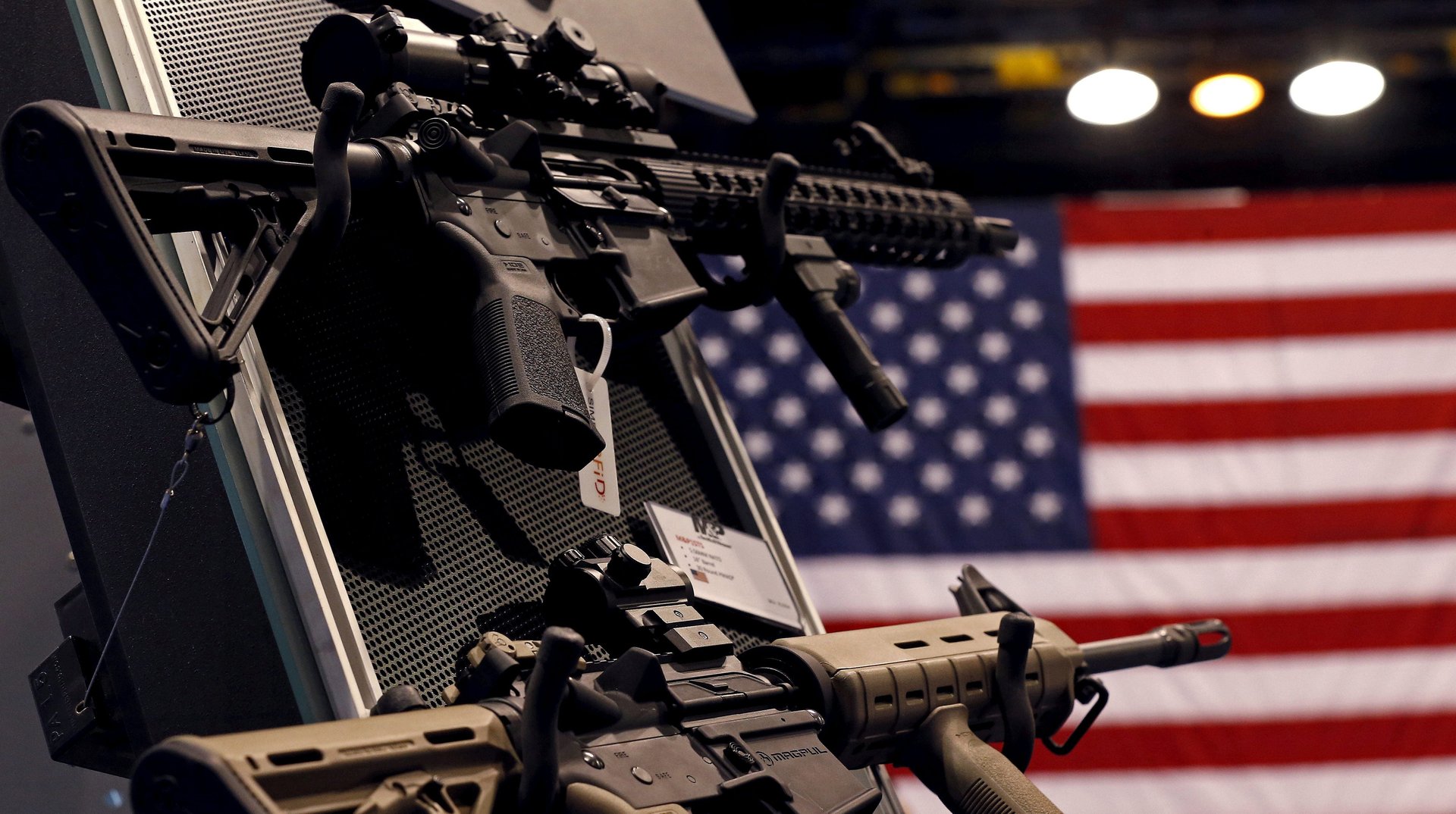Smith and Wesson was once a leader in gun safety. Then the NRA stepped in
In March of 2000, the White House signed a “historic agreement” with gun manufacturer Smith and Wesson, part of then-president Bill Clinton’s “comprehensive efforts to reduce gun violence in America.”


In March of 2000, the White House signed a “historic agreement” with gun manufacturer Smith and Wesson, part of then-president Bill Clinton’s “comprehensive efforts to reduce gun violence in America.”
Smith and Wesson, which changed its name to American Outdoor Brands in 2016, had pledged a host of changes to the way that it made and sold guns. It promised not to make guns that could accept ammunition magazines with more than 10 rounds. It would develop new “smart gun” technology that could only be fired by owners. And it would cut ties with gun dealers who sold weapons that were disproportionately used in crimes. Eighteen years later, many of those promises echo new proposals to curb gun violence after a Parkland, Florida, teenager massacred 17—using an American Outdoor Brands semi-automatic assault rifle.
In return for Smith and Wesson’s changes, a clutch of state officials agreed to drop over 30 lawsuits against the gun company for deaths and injuries caused by its products. The deal was compared to a successful campaign by several US states to limit and claim damages from the tobacco industry in the 1990s, after lobbying for new laws against smoking failed. In announcing the deal, Clinton praised Smith and Wesson for setting a “powerful example,” and noted that it was the culmination of a seven year effort to prove that “gunmakers can and will make their guns much safer without infringing on anyone’s rights.”
“As I have said all along there are responsible citizens in the gun industry who want to do right,” he said. But the deal would never be completed.
Three days after the company’s agreement with lawmakers, the National Rifle Association declared Smith and Wesson a “sellout,” for its “craven act of self-interest,” and took aim at the company’s British ownership. (Started in the US in the 1800s, Smith & Wesson was purchased by a British plumbing supplies company in 1987).
Smith and Wesson is the “first to run up the white flag of surrender and run behind the Clinton-Gore lines, leaving its competitors in the U.S. firearms industry to carry on the fight for the Second Amendment,” the NRA said. “Of course, there is no Second Amendment in Britain, where subjects are barred from owning handguns and many long guns.”
That very evening, an email message began circulating on the internet, according to the book Outgunned: Up Against the NRA, an account of how the gun lobby pushed back against the deal. The message “leapt from one internet address to another until it blanketed the sites frequented by the gun world,” authors Peter Harry Brown and Daniel G. Abel note (pg. 214):
PLEASE REPOST EVERYWHERE:Smith and Wesson gets two-thirds of its business from the civilian Marketplace. There aren’t enough military sales to sustain its Business. But there are plenty other firearms makes and models. Both Glock for pistols and Taurus revolvers come to mind.
IF WE ALL STOPPED BUYING NEW S&W FIREARMS, HATS AND ACCESSORIES FOR THE REST OF 2000 AND 2001, THERE WOULD BE NO S&W TO KEEP THE DEAL WITH THE CLINTON ADMINISTRATION.
No one has to go without a gun, simply go without an S&W gun.
Let’s fool them all. STOP BUYING NEW S&S PRODUCTS AT ANY PRICE FROM ANYONE
Smith and Wesson chief executive Ed Shultz, a lifetime hunter from Iowa and card-carrying NRA member, started getting calls at work threatening to assassinate him, including one threatening to shoot him with a sniper scope while he sat at his desk at the company’s Springfield, Mass, headquarters, the book notes. By May of 2000, Shultz was referred to as the “most hated man in the National Rifle Association,” by the Des Moines Register, and targeted at an NRA conference as a traitor who had made a “pact with the devil.”
Sales plummeted. Smith and Wesson laid off 125 employees, about 15% of its total, in October. Shultz was moved to another division of the British company. No other gun manufacturer followed Smith and Wesson’s lead and the government deal unraveled after George W. Bush was elected in November of 2000, backed by millions of dollars raised by the NRA. Smith and Wesson was sold in 2001 for a fraction of what its assets were worth to a small startup.
Shultz hasn’t spoken publicly about gun safety since then. When the New Yorker tracked him down after the 2016 Orlando shooting, which killed 49, he refused to answer questions, and grilled a reporter about how they got his number.
In 2006 Smith and Wesson started selling its M&P 15 Rifle. “We believe our M&P rifle series fills a tremendous gap in the marketplace by delivering high-quality, feature-rich tactical rifles that will be readily available in commercial channels,” then president and CEO Michael Golden said at the time. The company, like many in the industry, reported a record year for gun sales in 2016 fueled by expectations that Hillary Clinton would be elected president and fears that gun control measures would finally be voted in.